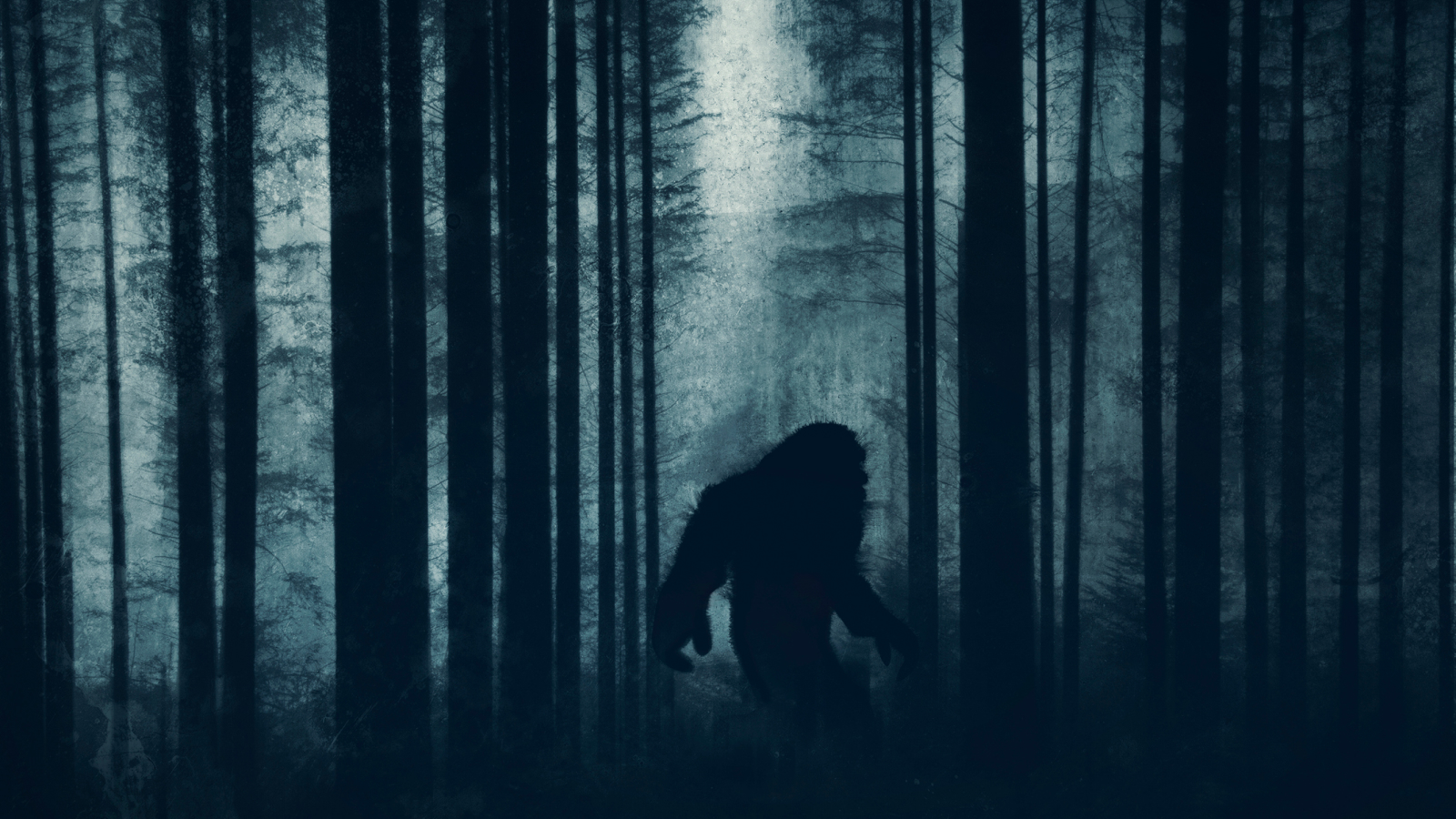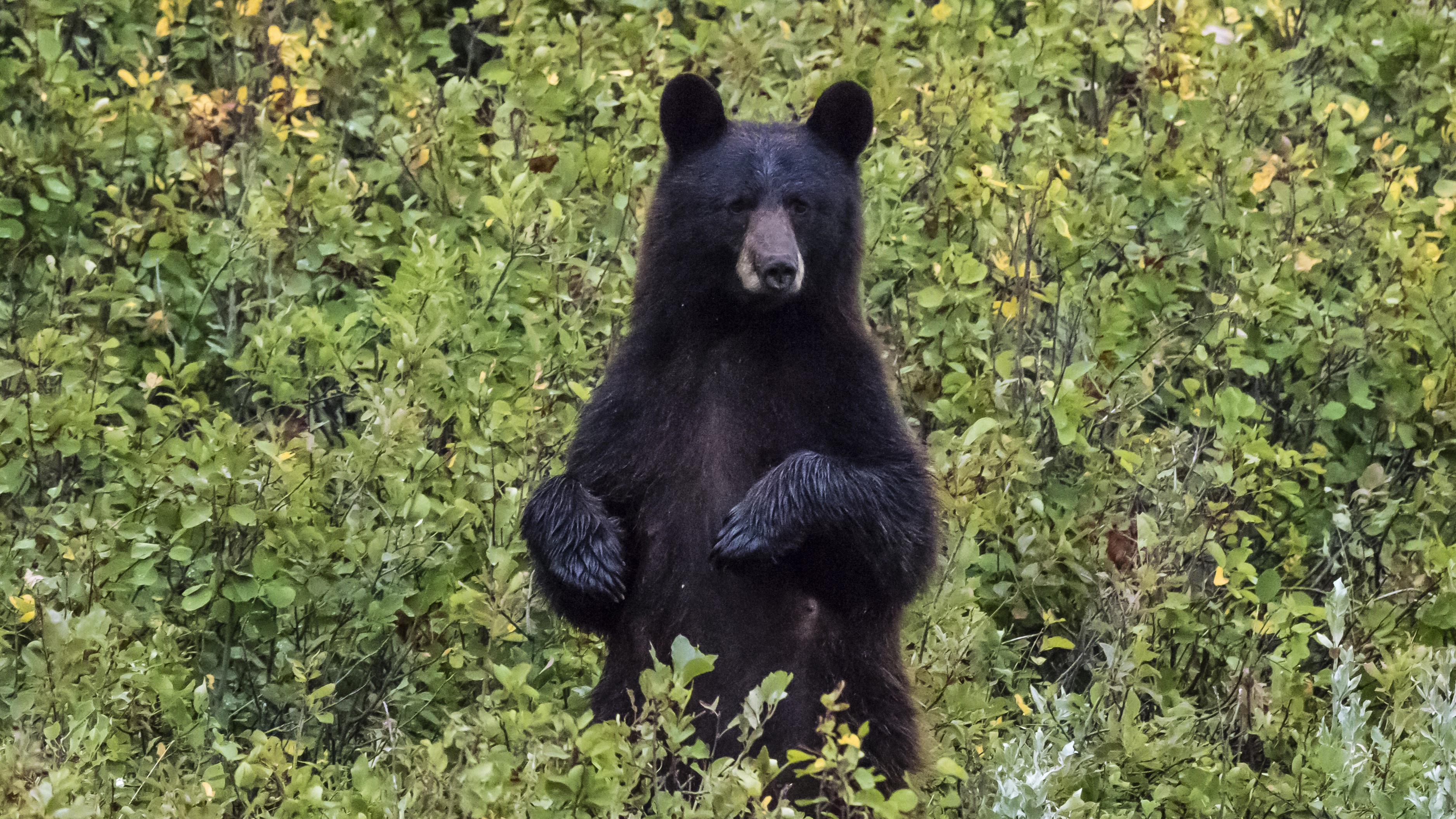Bigfoot? Sasquatch? Nope, it's probably just a black bear — unless you live in Florida
Bigfoot reports across North America have been linked to the presence of black bears, but the research can't account for sightings in Florida.

Are bears to blame for Bigfoot sightings? A researcher has found there's a link between North America's black bear population and people seeing hairy mythical creatures in the forest.
The new study, published Jan. 13 in the Journal of Zoology, found that for every 5,000 black bears (Ursus americanus), there's an average of one Bigfoot, or Sasquatch, sighting. And if bear numbers go up, so do the number of Bigfoot sightings.
Bears have long been tied to the Bigfoot phenomenon, and previous research already reported sightings of Bigfoot in the Pacific Northwest could be sightings of black bears. However, the new study has now established a correlation between bears and Bigfoot in many more states and provinces.
"Correlation doesn't mean causation but there might be so much correlation between black bears and Bigfoot sightings in most areas that the parsimonious [simplest] explanation is people misidentifying bears as sasquatches," Michael Hickerson, a professor of biology at the City College of New York who was not involved in the study, told Live Science in an email.
Related: 'Yeti hair' found in Himalayas is actually from a horse, BBC series reveals
Black bears are the most common bear in North America and can be spotted in 32 U.S. states and almost every province in Canada. Websites like the Bigfoot Mapping Project, which hosts around 8,000 historical and modern Bigfoot sightings, show people have reported seeing Bigfoot all over the U.S., but they're most heavily concentrated near the West Coast and in the eastern half of the country.
Bigfoot is a popular legend, but there's no hard evidence it actually exists. Reports typically describe Bigfoot as a large bipedal ape-like creature that's often around the size of a bear standing on two legs — a black bear can stand up to 7 feet (2.1 meters) tall.
Get the world’s most fascinating discoveries delivered straight to your inbox.
Hickerson and his colleagues published a "tongue in cheek" study in the Journal of Biogeography in 2009 that used a computer model to predict the distribution of Bigfoot in the Pacific Northwest, which ended up looking very similar to their predicted black bear distribution, suggesting many Bigfoot sightings were misidentified bears.
Floe Foxon, a data science student at the University of Leeds in England and sole author of the new study, built on the previous study by investigating the potential correlation between Bigfoot sightings and black bears across the U.S. and Canada, factoring in human population size — more people to make sightings — and forest cover.
Foxon's model, which is based on publicly available data from 2006 only, found that for every 1,000 additional bears in an area, there was a 4% increase in Bigfoot sightings. In other words, the more black bears present, the more people see Bigfoot. The forest area correlated with the black bear population, as expected, while the correlation between sightings and human presence was also high. Foxon speculated in the study that some Bigfoot sightings might be misidentified people.
Hickerson said the analysis was "well done" but felt Foxon should have used population densities instead of total numbers for bears and humans, as this would have accounted for states like New Jersey and Connecticut, which have very high bear densities.
Another wrinkle in the new study is that there were Bigfoot sightings in areas with few or no black bears. For example, Florida had a relatively large human population and many Bigfoot sightings but few bears and relatively little forest cover.
"Shouldn't less forest area predict fewer sasquatch sightings, not more?" Hickerson said. "And if there are more humans but very few bears, what are the mistaken identifications coming from? The author [Foxon] says 'other humans,' but I wonder if that explains it away."

Patrick Pester is the trending news writer at Live Science. His work has appeared on other science websites, such as BBC Science Focus and Scientific American. Patrick retrained as a journalist after spending his early career working in zoos and wildlife conservation. He was awarded the Master's Excellence Scholarship to study at Cardiff University where he completed a master's degree in international journalism. He also has a second master's degree in biodiversity, evolution and conservation in action from Middlesex University London. When he isn't writing news, Patrick investigates the sale of human remains.

